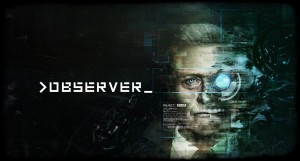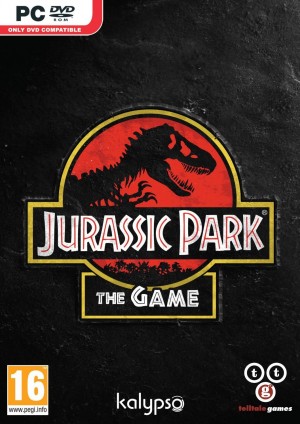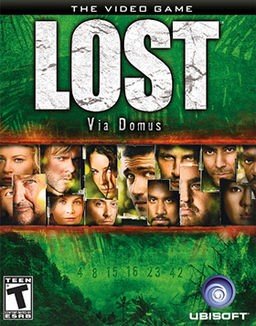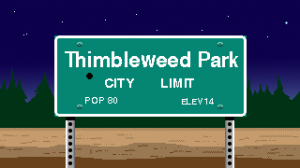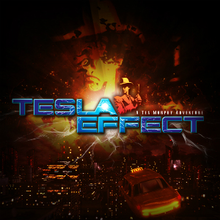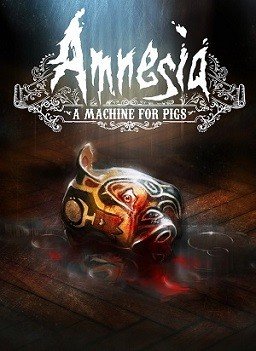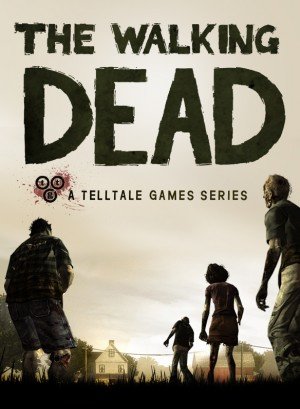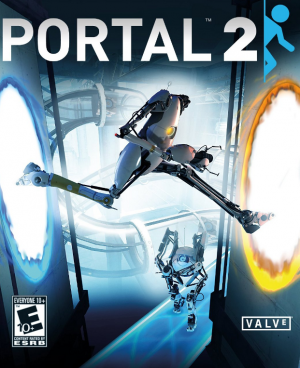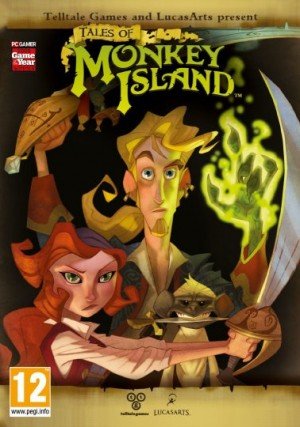Best Sound EffectsAggie Award Winners

As with animation, sound effects are frequently given short shrift in adventures, but effective use of audio adds a vital layer of moody ambience. You may not be able to put your finger on the reason, but some games make you feel like you’re really there, and often the atmospheric sounds have drawn you in subconsciously.
» Aggie Awards - category overview
The Aggie award winners:
Creaks (2020 winner)
If you’re going to name your game Creaks, you’d better be prepared to deliver in the audio department. Of course, with two previous Aggie awards in this very category, Amanita Design knows full well how powerfully atmospheric the right sound effects can be. Their latest idiosyncratically adorable puzzle-adventure takes place in an enormous, rickety wooden building inhabited by bird people. It's old, dilapidated and, yes, creaky. But it also sways in the whistling wind as water drips echo into the giant cavern in which it’s set, all overlaid with the protagonist's shuffling footfall. Where most games set the mood with background music, Creaks saves its music for special occasions, when it's all the more startling and memorable, and otherwise just lets its environment sing.
Everything about the world of Creaks is lovingly crafted and exquisitely detailed, but perhaps no more so than its sound design. Walk past some frying pans and you'll hear the ring of cast iron. Move from wooden boards onto a pile of discarded shirts and you'll notice your steps are slightly muffled. Every last carefully realized thump, squeak and tinkle builds believability, helping to ground this fantastical place in a surprising degree of reality. You can feel gears grind and chains clank, and empathize with the protagonist's little "oof!" as the wind is knocked out of him by a fall. If there really were a wooden bird castle hidden under your bedroom, this is exactly what it would sound like, and that's why Creaks earns the Czech indie studio a richly deserved third Aggie for Best Sound Effects.
2020 winner of:
2020 Readers Choice' winner of:
- No awards won
Lorelai (2019 winner)
Sound can make or break a horror story. In Lorelai, Rem Michalski’s traumatic coming-of-age story, it’s not only what you see that propels you through the eponymous protagonist’s nightmare life, but what you hear that will sometimes halt you in terror, afraid to find out what might be crunching right around the corner. Even in the quieter moments, ambient noises add a sinister element. As Lorelai stares at her reflection in the mirror, a clock ticks so loudly in the background that it’s almost like a bomb waiting to explode, reminding you that time is passing and that you must keep moving. Don’t let the banal tones of a leaking faucet plip-plopping lull you into a false sense of security, though, as horrifying effects like pigs squealing madly as they chase after you or the awful wet thunk of a severed head falling to the ground are never far away. For its rich and layered soundscape, interspersing the mundane with the terrible between brief moments of deceptive calm, Lorelai claims the Aggie for Best Sound Effects to the roar of applause.
2019 winner of:
2019 Readers Choice' winner of:
- No awards won
CHUCHEL (2018 winner)
CHUCHEL contains very little background art and no conversation, but these are scarcely missed as its extraordinary soundscape more than compensates. This game buzzes with tongue-in-cheek musical notes, antic movement and a fantastically creative acoustic palette. Everyone the protagonist meets emits wacky, emotive noises. A blue alien moans tunefully, puppies chant as they drift through the sky, the fiendish snowman snores and hisses, and a muscular storm cloud blasts forth in anger. When Chuchel manipulates gizmos they jingle and jangle, a boomerang warbles in the air, the peashooter bloomps as our hero blows, and cactus spines rasp as they’re pulled from his foot. Boxing gloves pzzz and zook when landing punches, triggering descriptive speech balloons so you know for sure they are pzzzing and zooking.
Still not convinced? Well then, wayward objects add to the zany atmosphere, as blondish comets giggle, a floating heart wails siren-like, kaleidoscopic light-shows sizzle, and a piano clumps to the ground. Chuchel himself reveals an unusual range of expressive utterances. He hums as he sneaks, bleeps as he ricochets, sings snarkily, whimpers in fear, shrieks in delight, and swears nonsensically when riled. Some of his oddest actions are accompanied by memorable fanfare, like the cymbal noise when he’s squashed into a pancake, or his dinging head when ideas surface. For taking us on such a clamorous tour of gleeps, slurps and pings, immersing us with audio gags galore, CHUCHEL scores a sonorous success and a much-deserved Aggie for Best Sound Effects.
2018 winner of:
2018 Readers Choice' winner of:
>observer_ (2017 winner)
Quick: what does “science fiction” sound like? Bleeps, bloops, and whirs most likely come to mind, right? But just as important as the gee-whiz effects of advanced technology are the sounds of everyday life that continue to feel familiar, even in the most dystopian cyberpunk future. The patter of rain on the window, the low hum of air conditioning, the creaks of an unloved old door opening and closing. Great sci-fi sound design grounds us in a world we know even as it elicits the wildest flights of fancy. Too little of one aspect limits imagination for boundless new possibilities; too little of the other disconnects us from our own shared reality.
Bloober Team’s >observer_ nails this delicate balance between old and new. The apartment complex where most of the action takes place is alive with the kinds of noises we’d expect from a dense urban slum: loud tenants shout from inside their rooms, electrical wiring buzzes as it hangs precariously from the ceiling (surely that can’t be up to code), floors that haven’t been reinforced in decades croak achingly underfoot. But amidst that mundane backdrop are the chunky, analog chittering of your scanner, the loud distortion of barely-functioning intercoms, and the distant ambient whine of passing air-cars. And then you hack into people’s minds, where the real nightmare begins with a horrifying soundscape that mixes industrial screeching, electronic glitches, and raw human despair. 2084 Poland is not a pleasant place to live, but it sure sounds great. For crafting a memorable, terrifying, and above all, aurally believable future world, >observer_ wins our 2017 Aggie for Best Sound Effects. [Cue applause.]
2017 winner of:
2017 Readers Choice' winner of:
- No awards won
Samorost 3 (2016 winner)
We’re rarely very aware of sounds unless something seems wrong. A glass smashes on the ground, a baby screams, or a siren wails and our ears perk right up. But otherwise we’re surrounded by hustle and bustle every day, so we become accustomed to tuning them out. This is true of games as well, as we take for granted the simple white noise of life, however pleasant or unpleasant it might be. But here’s the thing when it comes to games: they are inherently silent! Each and every sound we hear needs to be put there manually to create that authentic soundscape that we dutifully disregard, unaware of its subtle but important impact on our immersion. Many games prefer to drown the silence with an endless looping score, while others, like our Aggie Award Winner for Best Sound Effects, go the extra mile in creating a full-fledged backdrop of environmental ambience.
Samorost 3 won’t blow you away with overbearing effects, but rather encompass you in a natural atmosphere that make its organic settings feel truly alive. Listen closely and you’ll discern faint creature calls, whistling wind, machines humming, and the context-specific patter of little gnome footfall on grass, wood, stone, and metal. But these fantastical worlds don’t really spring to life until you begin to poke around, which this game implores you to do. You even get a magic horn to hear better, giving you an up-close-and-personal concert of sound: that rat-a-tatting woodpecker becomes an amplified symphony of odd percussion. Often it’s very musical, blurring the line between “sound effects” and “soundtrack” as a pond tinks with various notes each time you touch it, and insect antennae sproing when gently batted. And as you progress, the little protagonist utters delightful yelps, gasps, and anxious sighs, imbuing him with his own charming personality. For making us feel like these worlds could really exist, knowing that there’d be nothing but moving pictures without the superb sound design to support them, Amanita Design claims the top audio prize this year.
2016 winner of:
2016 Readers Choice' winner of:
SOMA (2015 winner)
It’s hard to believe that in most video games, there are NO inherent sounds involved. Each game begins in absolute silence, its world brought to life only through the dedicated efforts of sound designers. Some games can get away with minimal effects (and often try), but some practically beg for a richly atmospheric soundscape. For the latter, there may be no environment riper for wonderfully immersive sound design than creepy, remote research outposts stricken by horrific, mysterious tragedy. Whether in space, Antarctica, or the bottom of the ocean, the foreboding, creaky confines of dark corridors ravaged by the elements always seem to be rotten with grinding metal, distant alarms, whistling steam, and cracking glass. SOMA does this as well (and arguably better) than any game of its ilk.
The sound engineers at Frictional are masters at creating authentic aural backdrops, and SOMA represents them at the height of their craft. They give the game’s sound an incredible heft – something as mundane as opening a door is greeted with an array of sharp hisses, deep thuds, and shrieking steel. The moments you step outdoors in a diving suit are remarkable as well, as your perception of the world takes on a muted, echoing, distant profile. And when the monsters show up? Forget about it. Try keeping your cool when all you can hear are human screams mixed with garbled static as steam blasts your face while running through halls covered in vaguely fleshlike organic overgrowth that slaps wetly against your footsteps. It’s gross, it’s intense, and it’s ultimately Aggie-worthy as the best sound in any adventure game this year.
2015 winner of:
2015 Readers Choice' winner of:
- No awards won
FRACT OSC (2014 winner)
In the uniquely experimental FRACT OSC, players enter into a bizarre geometric landscape that seems to be holding its breath, its abstract heart barely alive, reduced to pulsating, electronic tones. Your efforts gradually awaken this dreamlike world, as color blooms and sound booms. White circles reverberate as you transport through them. Giant platforms rumble and are mashed together. Neon light-pillars buzz, machinery whines, and echoes vibrate upwards. Chasms open to dizzying drops; if you leap, static crackles on the landing. Puzzle grids resound to your touch, triggering layers of tonal cadences.
As you progress, you unlock a giant synthesizer, an electronic playground for sound sequencing and modulation. And finally, caught up in a spectacle of aural and visual sensations, you bring all previous puzzle elements together in a rhythmic, kaleidoscopic, resonant finale. The goal is ultimately to revive this desolate world with sound, making it all the more important to create an immersive audio stage upon which to play. In accomplishing this so convincingly, FRACT OSC silenced all other competitors to earn this year’s Best Sound Effects award.
2014 winner of:
2014 Readers Choice' winner of:
- No awards won
Kentucky Route Zero (2013 winner)
Sound effects often take a backseat when talking about the standout elements of a game. Perhaps that's because most developers don't seem to have put as much thought into their audio design as their graphics. After all, you can't hear a screenshot. And even when playing a game, usually the best soundscapes are those you barely notice are there – subtly, almost subliminally creating an immersive atmosphere that sets the stage for the visible action. But when you encounter a game with masterful sound design, and take a moment to stop and appreciate its underlying emotional impact, you realize just how much that extra effort can add to the experience. Sometimes, though, you may have to travel to the most unusual of places to find such a game. Kentucky Route Zero is a quiet game, even by the standards of a genre that isn't known for bombast. There is little music, no voice acting, and the sound design itself is pure minimalism. But less can often be more, and the first two Acts of this series illustrate that credo beautifully. Fields of grass blowing in the wind, singing crickets, semi-trucks passing in the distance… With just a few sounds conservatively sprinkled throughout each episode, Cardboard Computer has built an incomparable sense of place. The game gives players just enough aural cues to fire up the imagination before stepping back and letting that imagination fill the gaps in this surreal slice of southern Americana, and in doing so it earned our nod for Best Sound Effects of the year.
2013 winner of:
2013 Readers Choice' winner of:
- No awards won
BlindSide (2012 winner)
Sound effects have become increasingly more important in adventure games since computers moved past midi. From the cartoonish plops and boinks of Day of the Tentacle to the sounds of running water and machinery of Myst, nothing sets the mood and tone like the aural backdrop in any given environment. And when the environment can only be perceived through the noises it makes, it becomes infinitely more important to make sure those sounds are up to the task of drawing a clear audio picture. Epicycle's BlindSide is a pitch-black game that would have completely failed without an immersive soundscape to accurately inform us about what was really going on in the world around us. Creating one successfully would mean our Aggie Award for Best Sound Effects in 2012.
Obviously, the game rose to the occasion. Everything from a dripping faucet to a wall clock; from a running fountain to the scraping of furniture as it’s dragged across the floor, is convincing enough to fully "visualize" the surroundings without any visuals at all. Of course, the most important sound effects of all are the creatures chasing you through the game. Creeping blindly through a gymnasium full of sleeping monsters all around you remains one of the most nerve-wracking horror moments of the year, though the only evidence they exist is their heavy breathing and throaty snarling. What we imagine is often scarier than what we see, and the sounds they make are more than enough to terrify. What do the creatures look like? We’ll never know. But based on their horrifying growls alone, we’re sure we never want to know. BlindSide convinced us of that, in no uncertain terms.
2012 winner of:
2012 Readers Choice' winner of:
- No awards won
Jurassic Park: The Game (2011 winner)
None of us know what a dinosaur really sounded like, but thanks to Jurassic Park, most of us feel like we do. Steven Spielberg’s 1993 movie introduced us to the rattling neck frill of the Dilophosaurus, the groans of a sick Triceratops, and the strategic pack calls of the stalking Velociraptor, not to mention the terrifying roar and impact tremor-inducing footfall of a rampaging Tyrannosaurus. So when Telltale Games took over the franchise for a new gaming installment this past year, it was imperative to create an authentic ambient backdrop for the return trip to Isla Nublar.
Fortunately, they did just that, as exploring the island’s wilds is a lavish audio experience. As you creep through the forest floor, wild creature sounds and environmental effects all sound realistic, adding to the immersive feeling of danger surrounding you on all sides. Indoors, the clanging of non-human footsteps on metallic grates and the whirring of malfunctioning machinery remind you that nowhere is truly safe. The result is a continually compelling atmosphere and a truly terrifying auditory experience. The original film was an Academy Award winner for best sound editing, and this game does a good job of carrying on that tradition as the deserving winner of our Best Sound Effects Aggie for 2011.
2011 winner of:
2011 Readers Choice' winner of:
- No awards won
Amnesia: The Dark Descent (2010 winner)
You swear you just heard something. A scraping noise… something like that. Where did it come from? Somewhere behind you, maybe? Or above you? Wait… is it getting louder? What's making that sound? There's something in here with you. But what IS it? You don’t even want to think about those horrific cries of anguish and pain echoing in the distance. It’s terrifying enough right here, because the only thing scarier than a nightmarish flesh-eating monster lumbering straight at you is the nightmarish flesh-eating monster that you can hear but not see.
Frictional Games understands the power of imagination in creating fear, and it's the sound design of Amnesia: The Dark Descent that will set your heart racing and your mouse hand trembling. Sure, the game has its fair share of loud, sudden noises that will make you jump out of your chair, but it's far more impressive how every faint trickle of water, panicked footstep, or tortured moan raises the tension right to the breaking point until you can't take it anymore. Just as powerful is the interplay between the game's sound and its signature physics engine. Sometimes that scraping noise is a monster, and sometimes it's just you crashing into a nearby desk. Either way, you'll freak out. For making players forget that they aren't actually in constant mortal danger through a brilliantly-crafted soundscape, Amnesia wins the Aggie for Best Sound Design in 2010.
2010 winner of:
2010 Readers Choice' winner of:
Dark Fall: Lost Souls (2009 winner)
The emphasis on sound effects to enhance a frightening experience is one of the most important conventions of the horror genre, but perhaps one of the most underrated. While the impact is often subtle and difficult to gauge on its own, any door can give you chills when it swings open into the unknown with a slow, agonizing creak that dares you to step inside and see what lies in the darkness beyond. There are lots of doors in Dark Fall: Lost Souls. But it doesn’t end there, as series creator Jonathan Boakes understands full well what a key element sound is in building up an atmosphere of tension and dread.
Slowly exploring the darkened halls of the abandoned Dowerton train station and the labyrinthine corridors of the nearby hotel is an often unnerving experience: though rarely a genuine danger, horrors lurk in every shadow and restless ghosts wait in hiding until you’re distracted. However, it's the carefully planned soundscape that builds this tension: long before any visual shock comes the groan of the timeworn floor boards, the ominous whistle of the wind, the whispers – "Over here!" – murmured behind your back. These sinister noises are bound to raise the hair on the back of your neck, creating an almost unbearable suspense that needs a release. They may be as old as gothic fiction itself, but for its hauntingly effective use of these gimmicks, Dark Fall: Lost Souls deserves our Best Sound Effects award, and Jonathan Boakes the thanks of every horror buff for once again delivering a genuinely terrifying aural experience.
2009 winner of:
2009 Readers Choice' winner of:
- No awards won
Lost: Via Domus (2008 winner)
When you play a game all alone, with no distractions and headphones on your ears, there is nothing like a loud bang to make you jump from your seat or a menacing screech to send a cold shiver down your spine. Sound effects can be the perfect gimmick to achieve the desired emotional response such as tension, suspense, or even fright. Too many adventures get shortchanged in this subtly crucial area, but Lost: Via Domus, Ubisoft’s adaptation of the hit television drama series, does a wonderful job in wrapping players up in its unsettling island environment.
There is a sequence near the beginning of the game where players guide the amnesiac Elliot Maslow through a labyrinth of dark caves: bats squeak in the shadows and small waterfalls slosh against slippery rocks, distant thumps are amplified by the hollow cavities, and Elliot’s breath quickly becomes wheezy. This is just one example, but every sound in the game – from the roaring blast of the plane crash to the eerie, unidentifiable whispers in the jungle – is just as carefully designed and reproduced. While perhaps too brief and easy as an overall game, its impressive aural experience nevertheless makes Lost: Via Domus a stunningly atmospheric game.
2008 winner of:
2008 Readers Choice' winner of:
- No awards won
Readers Choice' Award winners:
Call of the Sea (2020 winner)
In Call of the Sea, Norah Everhart is searching for her husband, who disappeared while on an expedition to a mysterious Polynesian island. She arrives to find a lush tropical landscape accentuated by an equally succulent soundscape. As Norah roams the exotic flower-lined paths, you’ll hear the roar of a rocky stream and a plummeting waterfall. Birds bicker in a mangrove swamp, and lorikeets chirp above shimmering puddles in the sand. Underwater scenes slosh and burble as Norah swims, and eerie musical tones respond to the push of buttons in an elaborate coral reef puzzle cave. More gadgets are heard from as well, as a fan in the encampment clicks and whirs, while the scraping of wood and grinding of stone fills the air when Norah interacts with colorful ancient contraptions. Elsewhere, the wind howls and thunder crashes as she winds her way past an abandoned ship, desperately seeking her lost love. And so another game whose very title screams out for superb sound effects is the readers’ Aggie winner this year.
Whispers of a Machine (2019 winner)
As is often the case, the real winner here is “no answer,” not because no games had quality sound design, but because we tend to take ambient audio for granted unless alerted to its presence (usually for the wrong reasons). But crank up the effects volume in Whispers of a Machine and you’ll realize just how well its assortment of noises echoes its dystopian contrasts. Some are familiar: voices murmuring and dishes clinking in the canteen, the burble of coffee being poured, the click of a cassette tape pushed into place, and a steel-strung banner creaking in the wind. But then there’s the swoosh of a hovercraft, the grinding pulse of a laser, the buzz of household robots, and the rumble of a drone. There’s even an innovative puzzle that features a background din from which noises must be eliminated to reveal an essential clue. For deftly combining the two seemingly disparate elements into one convincing whole, Clifftop and Faravid take home another Aggie statuette from our readers.
CHUCHEL (2018 winner)
Most of the time people don’t even notice sound effects unless they’re done poorly – as evidenced by the fact that once again “no answer” is really the big winner in this reader category. But we’re in total agreement that in CHUCHEL you really can’t NOT notice them, for all the right reasons. Instead of a foley artist, Amanita must need a full orchestra to fulfill its sound design. A kettle drum tings as it scuttles by, a lightsabre buzzes, a tennis racket foops, and Chuchel snatches his hat from a giant cherry with a resounding boing. The written script must have looked like a veritable smorgasbord of onomatopoeia! Add in all the verbal performances as Chuchel blows raspberries when turned upside down or grunts and groans when exerting himself, and there could really only be one winner this year for best audio.
Thimbleweed Park (2017 winner)
Thimbleweed Park
As always, the big winner here is really “no answer.” It’s an annual reminder of how much we take for granted the audio backdrops to our gaming experiences, just as we do in real life. (When was the last time you consciously listened to the ambient noises around you every day?) Lots of games give short-shrift to sound effects as a result, but when done right they are a subtle but vital component of world-building, like the plentiful archaic tech devices in 1987 Thimbleweed Park: the staticky howls of a dial-up modem connection; tootles and dings from the Tron-3000 machines; hums when gadgets work, zaps when they’re disabled, and beeps as they crash. Other realism-inducing sounds include the click of a microwave door, the chime as an elevator passes a floor, a crackling flame on the diner’s grill, the loud spittle-twangs of death-dealing lasers, and even the hurling blech of vomit (hey, we didn’t say they were all pleasant sounds!). For making us so willing to suspend disbelief in the offbeat world of Thimbleweed Park, dingdingding our readers have a winner!
Samorost 3 (2016 winner)
Anyone object to this unanimous declaration of Samorost 3 for Best Sound Effects in 2016? (Cue crickets – oh wait, we don’t have SFX!) Actually, as is often the case, the overwhelming winner in this category was really “No answer”. It’s a hard category, right? We don’t listen for sound effects, we just expect them to be there, enveloping us subconsciously (though often they aren’t, and don’t). But for games as surreal as Amanita Design’s, even more care must be taken to maintain the illusion of reality, and with their little gnome’s first full-length outing, the Czech developer had us all abuzz. Who knew that plinks and plunks and clinks and clops could sound so musical, so magical? (Cue victory trumpe… oh, never mind.)
STASIS (2015 winner)
You say to-may-to, we say to-mah-to. This award HAD to go to a game based on a derelict station; the only question was which one. While AG staff slightly favoured SOMA, you readers even more slightly gave STASIS the nod for Best Sound Effects. And for very good reason. With music played sparingly, usually all you’ll hear are the ambient mechanical sounds of the Groomlake, with fans whooshing, steam hissing, and deck plates creaking. In the quieter moments, all you’ll hear is your own breathing, escalating as your stress levels climb. Occasionally the ship’s PA will interject with an inappropriately cheery automated announcement as a painful reminder of how wrong everything has gone. Play with headphones on, and enjoy. [Insert sounds of thunderous applause.]
Tesla Effect: A Tex Murphy Adventure (2014 winner)
Tesla Effect: A Tex Murphy Adventure
Sound effects are an unheralded aspect of game design, rarely noticed except when done wrong. In turn, many developers often give short shrift to this aspect, figuring that good enough is… good enough. But the best games recognize its importance in maintaining immersion, even if it never gets any attention. The year 2050 provides an intriguing soundscape for Tesla Effect. There’s the whooshing sound as Tex’s speeder lands, the shlink of an electronic syringe, the shlunk of a high-tech door, or the zing as Tex puts his hand through a hologram. Some sounds are more mundane, like the slow-motion clunk of a golf club, followed by a thunk as the ball rebounds against Tex’s head. Or the all-too-familiar beep and boom of a just-activated motion sensor mine. And there are horrifying sounds, like the screeching and buzzing of giant bees, the throaty roar of zombie-esque mutants, or the sound of distant thunder as Tex (once again) finds himself looking down at his own tombstone. You readers obviously liked what you heard, and that low rumbling noise is the sound of the Tex Murphy Aggie juggernaut rolling on.
Amnesia: A Machine for Pigs (2013 winner)
While the sequel to The Dark Descent wasn’t as favourably received as its outstanding predecessor, it certainly wasn’t the fault of its excellent sound effects. Crucial to any horror story, the soundscape here is filled with excruciating (in a good way) industrial sounds that perfectly suit the horrific environments. It deserves to be played in the dark with headphones on... if you dare. It also deserves the readers’ Best Sound Effects Aggie for 2013.
The Walking Dead (2012 winner)
There are some sounds in The Walking Dead that you really don't WANT to hear, like the telltale murmuring that alerts you to the presence of undead walkers closing in on your position. And then there are some you do, like the crack of your handgun as you put a bullet between the eyes of yet another oncoming, hideously murmuring zombie. But whether good or bad for your welfare, the audio backdrop is always convincing, never breaking the immersion of a story that kept us all glued to our chairs from gut-eating beginning to gut-wrenching end.
Portal 2 (2011 winner)
You’re alone so much of the time in the cavernous Aperture Science, it was imperative to create a convincing aural experience, and Valve did just that. With a steady stream of light industrial sounds from conveyor belts, grinding metal, whirring machinery, and splooshing tube gels, not to mention the hilarious pitch-modulated turret voices (which is sort of voice acting, but sort of not), the convincing soundscape earned Portal 2 the popular vote for best sound effects.
Amnesia: The Dark Descent (2010 winner)
They say that when one sense is blocked, your other senses are heightened. Since so much of Amnesia is spent skulking about in the dark, it’s no wonder we were all so attuned to the game’s incredibly terrifying soundscape. The unseen denizens of the Brennenburg castle do a whole lot more than go bump in the night, and we not only heard each hair-raising shuffle, scream, wail, and skitter – we felt them. Now THAT is effective sound design.
Tales of Monkey Island (2009 winner)
Tales of Monkey Island
Sound is every bit as important in comedy as horror. Things may go bump in the night, but they to go sproing, splat, and whoosh in the daylight. At least, they do in the the world of Tales of Monkey Island, which managed to complete the reader poll audio trifecta. From resounding cannon fire to gurgling manatee juices to a sound-based jungle maze, the ambient effects never missed a (figurative or literal) beat.
Sam & Max: Season Two (2008 winner)
Admit it: it was those underarm fart noises in Sam & Max: Season Two that decided this one, isn't it? Yeah, those almost won us over, too. Or maybe it was the sound of whapping Max out of the way, or the screeching tires of a careening DeSoto, or... well, you get the idea, since you selected it over The Lost Crown and A Vampyre Story in a loudly contested vote quite different from our own.









